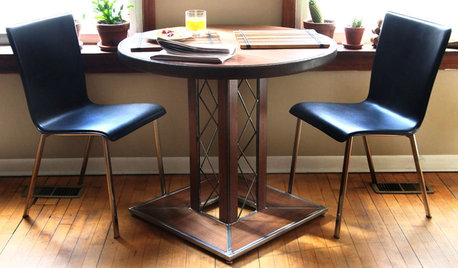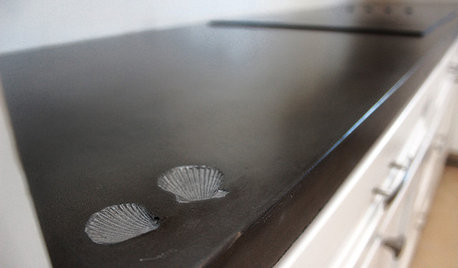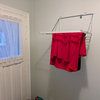A lot of the questions here focus on several issues with front loading machines. Probably the most concerning for would be purchasers of a FL'er are odor issues. Odor issues seem to plague some owners, while others never have a problem. Some even have the issues while doing everything right, ie leaving the door open, wiping down the rubber boot etc. So what is really at the bottom of the dreaded smelly washer syndrome? For starters a FL'er is different than a top loader (TL'er) in that a FL'er is sealed when the door is closed. A closed damp environment is ideal for stinky microbes to multiply. Yet some leave the door open and still have the problem. Your detergent and your water quality play a big role in whether or not your washing machine develops a smell, also the types of soils that you are washing also plays a role. Hard water makes detergents less effective, hard water also can cause oils from the clothing to not be removed from the clothing effectively, and to coat the outer plastic drum with a slimy fat based deposit to which bacteria and mold can use as food, these oils can be from cooking, greases from working on cars, or even oils from human skin. pH of the water also plays a role, pH is a measure of how acid or alkaline the water is. 7.0 is considered neutral, it is neither acid nor alkaline, anything below 7.0 is acidic, and anything above is alkaline. So why is water pH important? Well most microbes and molds prefer slightly acidic environments, and while most detergents are highly alkaline in nature the rinse water may be acidic, and since this is the water that will remain on the outer drum walls until the next wash, this can be and important factor in stinky washer syndrome.
As with anything an ounce of prevention is worth a pound of cure. The keep that nice new expensive washer nice and clean and smelling great here are a few tips. Wash in warm or hot water, most items say cold only, but can be washed in warm just fine, warm is often 90-95 degrees F, this is below body temperature. Warm used to be considered 110 degrees F, in order to save energy this temp has been reduced. If your unit has a sanitary cycle then use it. This cycle is great for use on whites like underwear and socks. Once a month put cup of cascade complete dishwasher detergent in the washer, do not add any cloths and use the hottest water available. Once every 3-6 months run a cleaning cycle with 2/3 cup of regular unscented chlorine bleach. Finally use only an HE detergent.
Another concern is the detergent that you will be using. Many people have their favorite that they used when they had a top loader, and will often times go with the same brand in an HE version if available, or just use the regular version. I strongly suggest that you use only HE or HE compatible detergents, and hereÂs why. FLÂers use very little water, thus the small amount of water gets very dirty. HE detergents have more low foaming surfactants, and most important a far higher amount of anti-redeposition agents. Anti-redeposition agents prevent the removed dirt from getting back into the fabric, and making the fabric come out dingy. Many people use regular detergents in smaller amounts and are very satisfied with the results, but water chemistry and soils types as well as amounts of soil play a role. If your clothes are not that dirty to begin with then a non HE detergent in reduced amounts may be all you need to get your clothes clean, but for heavy dirt nothing beats a correct dosage of an HE detergent. So good HE or HE compatible detergents are the sears powdered detergents, they come in 120 load sizes at $15.00 or $0.125 per load. CharlieÂs soap is another good one, and Bio-Kleen also performs very well with most machines and water chemistries. The cost per load for an HE detergent is no more expensive than regular versions. If you are a new FLÂer user you will need to experiment a little to find the best detergent for your needs and water chemistry.
WhereÂs the water? That is a common question that new owners of FLÂers have. They are used to seeing water half way up the window on the commercial front loaders that are used in Laundromats. When they see that little puddle at the bottom of the drum they think, there is no way laundry is gonna get clean with so little water. Well itÂs not the water quantity that gets your clothes clean, there are 3 forces at work to obtain clean clothes. First is the detergent/water solution, next is heat and time, and third is mechanical movement. ItÂs the dropping of the dirty clothes from a height that forces the warm or hot detergent solution through the fibers of the clothes, releasing the dirt, when done over a certain amount of time the clothes will be clean. This smaller amount of water is why HE or HE compatible detergents should be used. Non HE detergents may foam or suds up to much, this will cushion the fall of the clothing and lessen the effects of mechanical movement. HE and HE compatible detergent use surfactants that wonÂt foam easily.
Why is my new washer shaking my house! FLÂers by design transmit all of the unbalanced forces during a spin cycle to the floor, this is why most brands incorporate some type of fancy suspension system consisting of springs, shock absorbers, and large heavy concrete weights. Some more modern designs incorporate more advanced methods of vibration control. Most new FLÂers use a sophisticated system of load balancing by measuring the rotation variation of the main drive motor by cutting power to the motor at the start of the spin cycle. A computer looks at the pulse that it receives from the motor and based on the software decides whether or not to rebalance the load, or proceed with the ramp up to the final spin speed. This is very important because the forces involved in spinning a large load of wet laundry at 1000 plus rpm is very great. Despite all this technology the washer must be on a very sturdy floor to prevent the machine from bouncing. A wooden floor that bounces when the machine is trying to spin up will actually make the drum become even more unbalanced and make the machine bounce even more, itÂs a vicious cycle. Ideally the floor should be concrete such as that found in a basement. If you must install on a wooden floor then it would be wise to have a contractor come in and check how sturdy the floor is, and add additional bracing if needed.
Installation follies. So you have done your homework and decided on what FLÂer to buy. Now comes the really important part, getting it in your home and hooked up properly. Most people opt to have the store where they purchase their machines deliver and install them. While the delivery is a great idea, these things are very heavy, having a big box store install them for you may not be a such a great idea. Often times the shipping bolts are removed prior to them taking it off the truck, the shipping bolts should remain in place until the unit is in place, this protects the suspension components until the machine is where it needs to be. A lot of people have had other issues such as hoses not being tightened properly and causing a flood. Installation is a very easy process to do yourself, and armed with the instructions your will be sure that it is done correctly. Leveling the machines are important, but it is also important to make sure that each leg is bearing itÂs share of the machines weight, if the machines are not level or the legs arenÂt set properly this can lead to balance and vibration issues.
Front load vs top load. There are pros and cons to each washer type, by doing a little homework you can figure out which is best for you. In areas where water prices are high a FLÂer may be the way to go. If you have well water or your water is inexpensive than a top loader may be just the ticket. Either way you go consider the energy used to heat the water as energy is often times much more expensive than water. Both systems are very proven systems that do in fact get your clothes clean.
So there you have it, I hope that this will help answer any questions for those that are considering buying a new FLÂer.
















neatfreaknot
jdenyer232Original Author
Related Discussions
Most Common Repeated Questions
Q
Answers to Hank's Mustard Questions
Q
Answers to Sheri's Tomato & Basil Plant Questions
Q
OT Boxerpups--Can you Please answer boxer puppy questions? :)
Q
suburbanmd
priince
jdenyer232Original Author